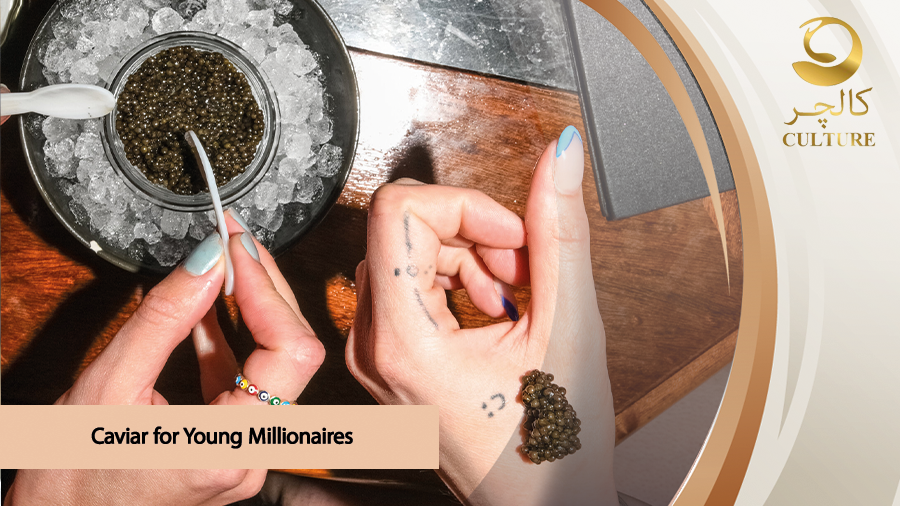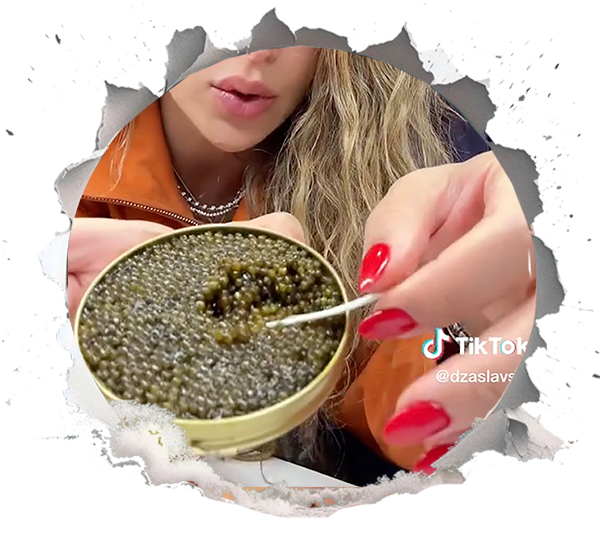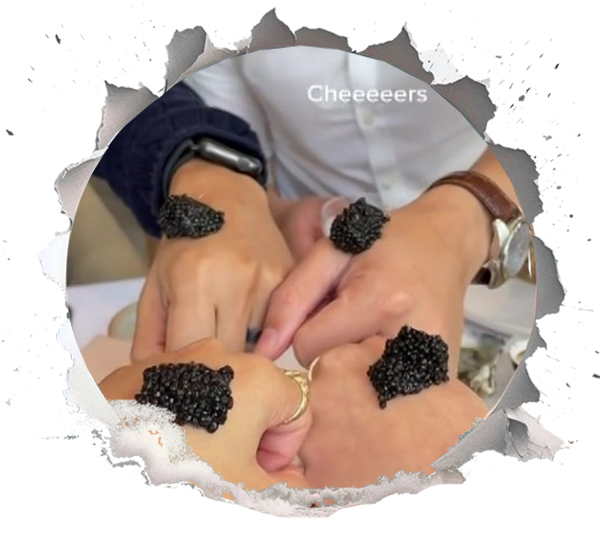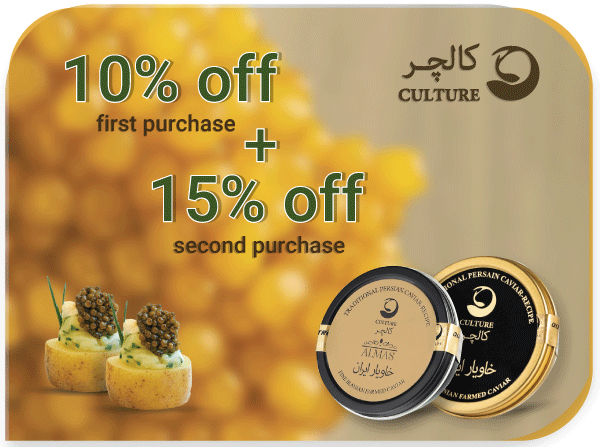Caviar for Young Millionaires: ‘Luxury’ Meaning for Gen Z

The concept of luxury is undergoing a seismic shift. For Gen Z millionaires—those digital-native, ethically minded under-30s who’ve amassed fortunes via crypto, TikTok, or tech startups—opulence isn’t about dusty champagne flutes or inherited titles. It’s about redefining what exclusivity means in a hyper-connected world. Enter caviar for young millionaires: a metaphor for how this generation blends tradition with innovation, turning even the oldest status symbols into something fresh, experiential, and Instagram-ready.
Old Money vs New Wealth: A Clash of Symbols
Old-money luxury whispers. Think mahogany-panelled libraries, vintage Bordeaux, and heirloom Rolexes. These symbols scream heritage, patience, and quiet exclusivity. For decades, caviar—particularly ultra-exclusive varieties like Almas caviar, sourced from rare albino beluga sturgeon in the Caspian Sea—sat alongside foie gras and truffles on the menus of elite private clubs. It was about tradition, served in ways that honoured centuries of ritual.
Gen Z’s nouveau riche, however, don’t whisper. They broadcast. Their wealth, often self-made and digital, demands a new lexicon of luxury. Why flaunt a yacht when you can own a viral NFT? Why join a secretive members’ club when you can gatekeep a Discord server with 10,000 waitlisted users? For them, caviar for young millionaires isn’t just a delicacy—it’s a flex that merges ethical sourcing with shareable spectacle. Imagine sustainably farmed sturgeon roe served at a metaverse launch party, gold-leaf tacos topped with caviar served to a crypto conference. It’s luxury, but louder, faster, and with a side of meme potential.
Caviar 2.0: How Gen Z Young Millionaires Reinvents Tradition

Caviar among young millionaires isn’t random. It’s a conscious choice to reclaim a classic symbol—but on their terms. While old money might prioritise rare Caspian varieties like the most expensive caviar, Gen Z seeks innovation: sustainable non-GMO caviar (no sturgeon harmed), or brands that offset carbon emissions per tin. The experience matters as much as the product. Forget stuffy silver spoons; today’s caviar is paired with simple and delicious food or presented as part of a curated unboxing video.
This generation’s caviar isn’t just eaten—it’s documented. A £500 tin isn’t truly luxurious until it’s featured in a TikTok reel, garnished with edible gold and tagged with #CaviarForYoungMillionaires. The dish becomes a viral moment, blending taste with tactical storytelling.
Digital Status Symbols: From NFTs to Virtual Yachts
For Gen Z, the most coveted luxuries often exist offline and online. Consider NFTs: owning a Bored Ape isn’t just about art—it’s a passport to exclusive IRL events, like ApeFest in Hong Kong. Similarly, virtual real estate in Decentraland sells for millions, while digital fashion lets users flex wealth across platforms.
Even physical indulgences are getting a tech twist: boutique retailers now let you buy caviar with cryptocurrency, merging tangible luxury with digital currency’s borderless appeal. These assets are ephemeral, but their value lies in access and community—a stark contrast to old money’s tangible treasures. A Picasso might gather dust in a mansion, but a rare NFT (or a crypto-purchased tin of caviar) sparks engagement, controversy, and clout.
Ethics as the Ultimate Flex
For Gen Z millionaires, luxury isn’t just a display of wealth—it’s a public performance of values. This generation’s approach to opulence is steeped in contradiction: they demand exclusivity (think limited-edition drops or invite-only experiences) while simultaneously championing inclusivity and sustainability. It’s a delicate balance, but one that defines their identity. Where previous generations used luxury to signal detachment from societal concerns, Gen Z wields it as proof of their ideological rigor.
The Paradox of Ethical Exclusivity
The 2023 Luxury Institute survey revealing that 68% of young millionaires prioritize ESG (Environmental, Social, Governance) credentials isn’t just a statistic—it’s a manifesto. For Gen Z, exclusivity no longer derives solely from rarity or price tags. Instead, it’s about curated impact. Take caviar: while old-money elites might flaunt Almas caviar (a relic of unsustainable overfishing), Gen Z’s version of the most expensive caviar is sourced from farms powered entirely by solar energy. The cost isn’t a bug—it’s a feature, proving they can afford both luxury and planetary responsibility.
This ethos extends beyond caviar. These alternatives aren’t just “cheap substitutes”—they’re trophies of innovation, allowing buyers to flaunt wealth and environmental savvy. Similarly, carbon-neutral private jets (yes, they exist) let this cohort traverse the globe while funding reforestation projects, turning guilt into a flex.
Hypocrisy Is Kryptonite: The Personal Brand Imperative
Gen Z’s wealth is often tied to their personal brand, cultivated meticulously on platforms like TikTok and Instagram. In a world where every purchase is scrutinized, hypocrisy isn’t just frowned upon—it’s brand suicide. A viral tweet exposing a “sustainable” influencer using a gas-guzzling superyacht can unravel years of carefully crafted credibility.
This hyper-awareness explains why Gen Z millionaires don’t just buy ethical products—they broadcast the entire supply chain. Imagine a TikTok unboxing video of caviar, peppered with captions like “zero-waste packaging” or “sturgeon-friendly farming.” The product becomes a prop in a larger narrative: “I’m rich enough to care.”
The New Rules of Status

For Gen Z, traditional luxury’s “do as I say, not as I do” model is obsolete. Their status symbols must align with their ethics, creating a Venn diagram where opulence and activism overlap. This isn’t altruism—it’s strategic. By demanding transparency and sustainability, they force brands to adapt or die. For example, legacy caviar houses now tout blockchain-tracked sourcing to appeal to crypto-savvy buyers who buy caviar with cryptocurrency and want proof their purchase didn’t harm ecosystems.
Even the act of spending is reinvented. To buy caviar with cryptocurrency isn’t just a transaction—it’s a nod to decentralized finance’s disruptive potential, marrying cutting-edge tech with gourmet indulgence. It’s a flex that says, “I’m wealthy in both coins and conscience.”
Gen Z’s redefinition of luxury isn’t a passing trend—it’s a power move. By tying status to ethics, they’ve turned consumption into activism. Caviar, once a symbol of excess, is now a battleground for sustainability. Diamonds, historically tainted by conflict, are reborn as climate-positive marvels. For young millionaires, the ultimate luxury isn’t just owning something rare—it’s owning something righteous.
The Future of Luxury: Who Wins?
The tension between old and new luxury raises questions: Is a £10,000 NFT more valuable than a £10,000 watch? Can caviar for young millionaires coexist with beluga served in Mayfair?
Ultimately, Gen Z’s approach—mixing innovation with responsibility, digital with physical—suggests luxury is becoming democratised, yet stratified. Access, not ownership, is king. The true status symbol isn’t what you have, but what you experience—and how creatively you share it.
So, next time you see a 25-year-old crypto founder popping sustainable caviar on a livestream, remember: it’s not just a snack. It’s a manifesto.
Final Word
For Gen Z millionaires, luxury is no longer confined to gilt-edged menus or silent auctions. It’s a dynamic blend of ethics, exclusivity, and digital daring—where even caviar gets a blockchain-powered makeover. As the old guard clings to relics like Almas caviar, the new wealth writes its own rules, one Instagrammable tin of caviar for young millionaires at a time—preferably ordered after you buy caviar with cryptocurrency.

The Best High Quality Caviar
Surprise Your Taste Buds!

